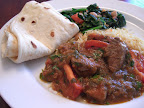Smoking a Picnic Ham
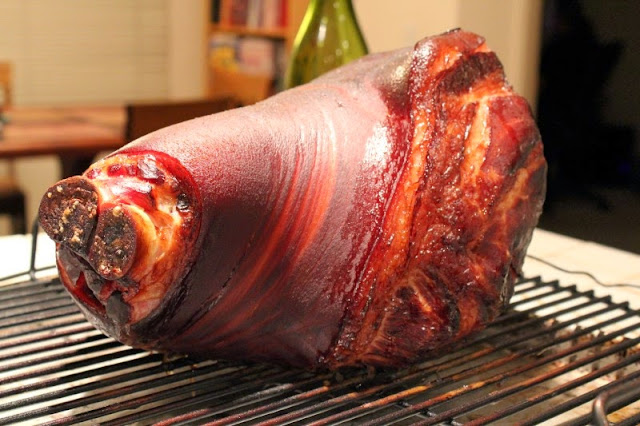
While grocery shopping this past holiday season, we found ourselves unable to resist buying a lovely, and inexpensive, fresh pork picnic "ham". I say "ham" because it wasn't ham yet, but it was soon to be.
The picnic cut is the shank end of the pork shoulder (the other half of the shoulder is the pork "butt" - the cut often used for pulled pork). The meat on the picnic is a bit darker and tighter, and is perfect for turning into ham. The picnics we've used have been around ten pounds.
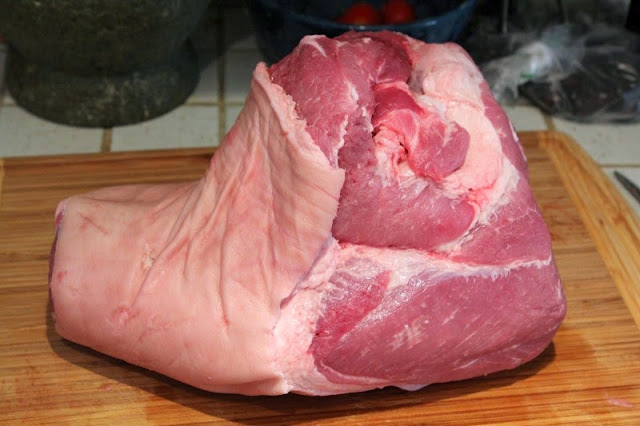
The process is actually quite simple. The first step is to put it in a salty brine in a cool place (we use a cooler in our beer-chest at about 45 degrees F).
The brine is 10 liters of water, 500g kosher salt, 100g pink salt (curing salt), 75g sugar, 75g brown sugar, 1 T black pepper corns, 2 t coriander seeds, 1 t yellow mustard seed.
We boil part of the solution for a few minutes to soften the spices, add water to reach 10 liters and cool to 40 degrees F before adding to the pork.
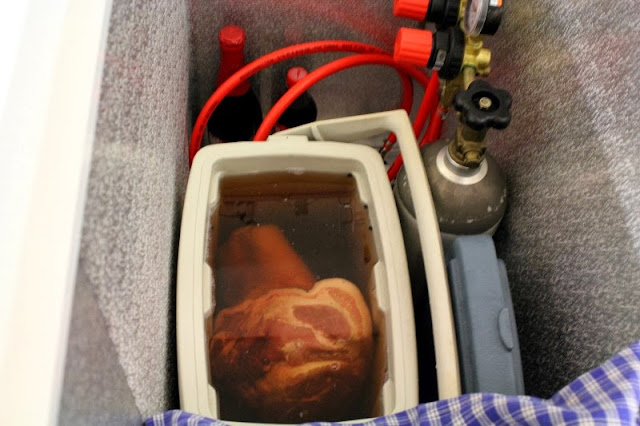
After six days in the brine, take it out, rinse it, dry it off well and put it into the refrigerator uncovered for two more days. This allows the skin and surface to dry a bit which allows it to take up the smoke more readily.

After brining and drying, it is time to smoke. We use our Weber Smokey Mountain with apple and pecan wood smoke for 7 to 8 hours. Keep the smoker at about 180 degrees F for the first couple hours, then up to 215-230 for the next four-five hours, finishing at 240-250 degrees the last hour or two until the meat reaches an internal temperature of 165 degrees.
Here is what it looks like when it comes off of the smoker:

Make sure you plan to feature the ham in a meal the same day you smoke it - it is super good hot off of the smoker.

No need to do anything fancy - just slice it and eat it. Yum!
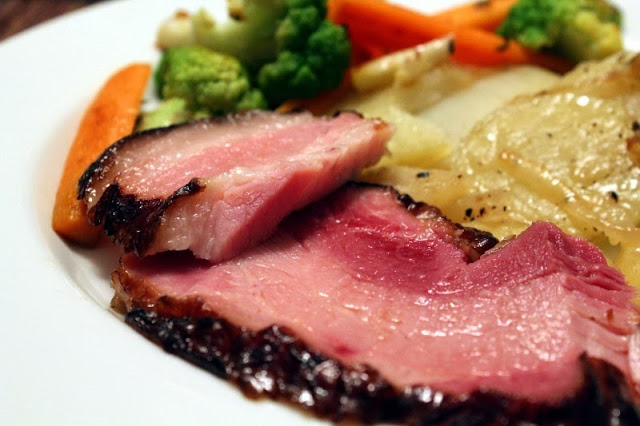
The part of the ham under the skin has a nice fat layer that is reminiscent of pork belly:
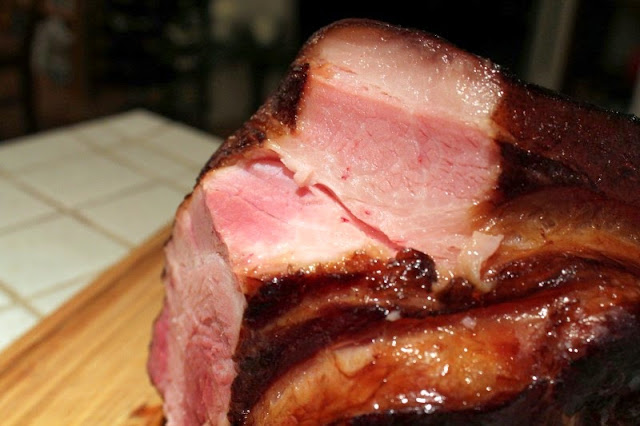
We've found that these fattier slices make a nice substitute for chashu in ramen:
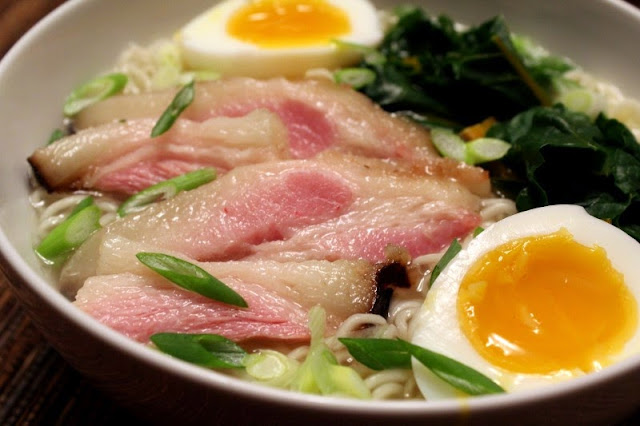
Ham is now solidly in our list of things we make instead of buy. If you've got a smoker, you owe it to yourself to give it a try.












